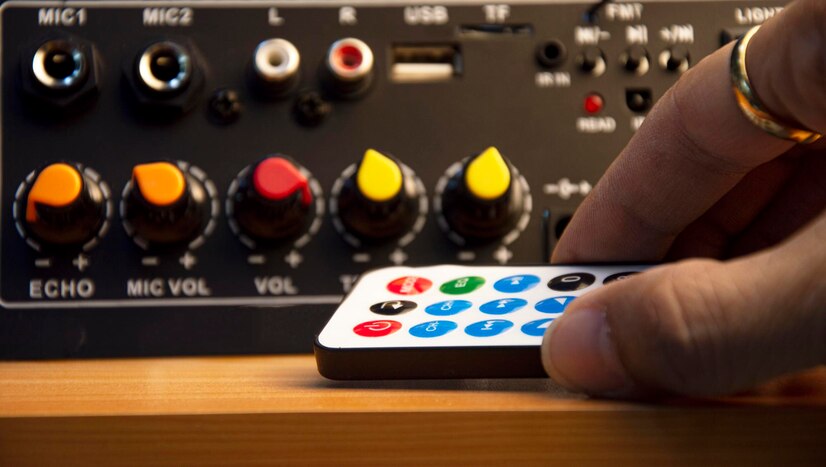With regards to SickGear, a high level programming for overseeing and downloading Network programs consequently, figuring out the complexities of updates and rescans is fundamental for a smooth client experience. As a strong PVR (Individual Video Recorder) device for Usenet and deluge clients, SickGear succeeds in mechanizing the course of Program the board. However, users often encounter confusion when it comes to understanding the difference between sickgear rescan update difference. This article will break down these terms, help you understand their purpose, and guide you through making the most of sickgear rescan update difference features.
What Is a SickGear Rescan?

In SickGear, rescan refers to the process of rechecking your media library to ensure that the files stored in specific directories are up-to-date. This function is particularly useful when you have made manual changes to the files outside of sickgear rescan update difference such as adding, removing, or renaming episodes. Essentially, it is a way of syncing SickGear’s internal database with the actual content in your media directories.
During a rescan, SickGear analyzes the directories you’ve assigned to specific shows and looks for newly added episodes, renamed files, or deleted content. The primary objective of a rescan is to ensure SickGear’s database matches your actual media files.
When Should You Use Rescan?
A rescan is ideal in the following scenarios:
- Manual File Changes: If you have manually added, renamed, or deleted media files, running a rescan will allow SickGear to update its database accordingly.
- Missing or Incorrect Episode Listings: Sometimes, sickgear rescan update difference might not properly recognize new episodes due to metadata issues. A rescan helps fix these discrepancies.
- Library Maintenance: Keeping your media library tidy and accurate is crucial for a seamless experience. A rescan ensures that SickGear remains aligned with your actual files.
Rescanning helps maintain order in your media collection, ensuring sickgear rescan update difference reflects any changes that have occurred outside the application.
What Is a SickGear Update?
On the other hand, update in sickgear rescan update difference refers to the process where the software fetches the latest data for your shows, typically from TVDB, Trakt, or other external sources. This includes downloading metadata such as episode names, air dates, plot summaries, and status updates (e.g., canceled or renewed).
An update is not concerned with the media files stored on your hard drive. Instead, it focuses on keeping your TV show data current. This ensures that sickgear rescan update difference has the most up-to-date information on your shows and episodes, enabling it to automatically grab new episodes as they are released.
When Should You Use Update?
An update should be run in the following circumstances:
- New Episode Information: If new episodes have been aired or announced, running an update allows SickGear to recognize them and prepare to download them.
- Show Changes: If a show has changed its schedule, has been renewed, or canceled, running an update will ensure sickgear rescan update difference is aware of the latest status.
- Accurate Metadata: For users who rely on metadata like episode descriptions and air dates, regular updates are necessary to keep information accurate.
While SickGear can often automatically update show data, manually running an update ensures that you have the latest information when needed.
Key Differences Between SickGear Rescan and Update
While both rescan and update serve to keep your sickgear rescan update difference library in check, their objectives and functions differ significantly.
1. Purpose
- Rescan: Focuses on the media files you have stored locally. It ensures that your physical files match what sickgear rescan update difference thinks you have in your media library.
- Update: Focuses on metadata and episode information. It checks for new episodes, changes in schedules, and other show-related data from external sources.
2. Trigger Events
- Rescan: Should be triggered after making manual changes to your media library, such as adding, renaming, or deleting files.
- Update: Should be triggered when new episodes are released or when you need to refresh show data.
3. Scope
- Rescan: Limited to the files that are already on your system. It does not retrieve external information or affect metadata.
- Update: Retrieves external data about the show, including upcoming episodes, cancellations, and metadata updates.
How to Perform a Rescan and Update in SickGear
Understanding when and how to use these functions is essential for maintaining an organized media library. Here’s how you can efficiently use these features in sickgear rescan update difference:
How to Perform a Rescan
- Go to the Show List: In SickGear, navigate to your show list where all your tracked shows are displayed.
- Select a Show: Choose the show you want to rescan. This will take you to the specific show’s page.
- Rescan Button: Look for the Rescan button, typically located near the file management section.
- Initiate Rescan: Clicking this button will prompt sickgear rescan update difference to recheck your media folders and adjust its database accordingly.
How to Perform an Update
- Go to the Show List: Similar to the rescan process, start by navigating to the show list in SickGear.
- Select a Show: Choose the show that needs updated episode information or metadata.
- Update Show Data: Look for the Update button, which will refresh the episode list and other metadata.
- Automatic Update: Alternatively, enable automatic updates in your sickgear rescan update difference settings to ensure that show data is periodically refreshed without manual intervention.
Why SickGear Rescan and Update Are Important for Your Media Library

Regular use of rescan and update helps you maintain an accurate, organized media library. By understanding and using these functions appropriately, you avoid common issues such as missing episodes, inaccurate metadata, or synchronization problems between your media files and sickgear rescan update difference database.
Benefits of Regularly Using Rescan and Update
- Accuracy: Ensure that SickGear accurately reflects what’s in your media library.
- Automation: Stay updated on upcoming episodes without needing to manually search or download them.
- Efficiency: Avoid redundancy by preventing SickGear from attempting to download episodes you already have.
Both features are key to ensuring your SickGear setup runs smoothly, keeping your media experience seamless and up-to-date.
FAQs.
- What is the difference between SickGear rescan and update?
A rescan checks your local media files for changes, while an update fetches new episodes and shows data from external sources. - When should I use the rescan feature in SickGear?
Use rescan after manually adding, renaming, or deleting files in your media library. - How often should I run a SickGear update?
Run updates regularly to keep episode data, show statuses, and schedules current. - Does SickGear rescan download new episodes?
No, rescans only sync your media library; updates handle downloading new episodes. - Can SickGear automatically update show data?
Yes, you can enable automatic updates to keep show metadata and episode information refreshed.
Stay in touch to get more information on World Scope ! Thank you

